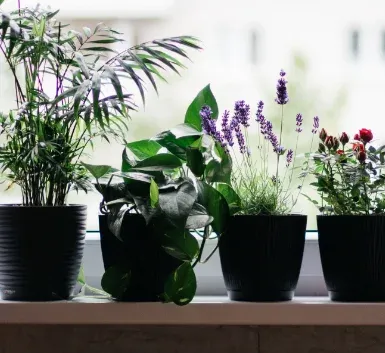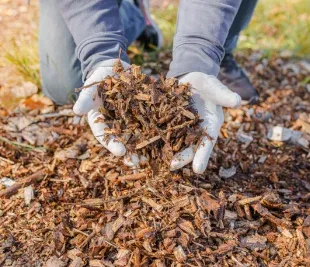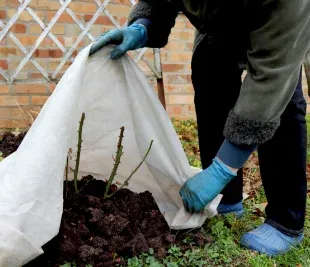Simple steps to prep your plants and garden for winter
Fall is in the air … and the first frost of the season is on its way in many parts of the country. If that sounds like your neck of the woods, here are a few quick tips to help you get your plants ready for the first frost.
Watch the forecast.
Pay attention to the temperature and moisture in the air. Watch your local weather reports. The first frost often happens on a clear night.
Indoors
-
Is the nighttime temp below 45 degrees? Time to bring in tropical, semi-tropical and cold-intolerant potted plants.
-
Before the move, spray them with your horticultural product of choice to ensure unwanted insects inside the leaves or soil don’t make it into your house.
-
Place the containers near windows for adequate light.
-
Don’t overwater. These plants will need less water once they’re inside. Let the soil dry before watering again.
Outdoors
-
Harvest any remaining warm-weather vegetables (like tomatoes and peppers). Throw away diseased plants. Don’t leave them in your garden or put them in the compost pile.
-
Clean out your garden; removing debris and weeds.
-
Water your perennial flowers and flowering shrubs in the fall. Moist soil retains more heat than dried-out soil.
-
Many perennial flowers can be left to be cut back in the spring. The birds will enjoy their seeds through the winter, and they’re pretty to look at. However, there are some that should be cut back in the fall to avoid spreading diseases. Those include powdery mildew and hostas. Wait until after the ground has frozen hard and the foliage has died, then cut them back, leaving about three inches of stem. Mulch with leaves or straw.
-
Cover your garden beds. Consider adding compost now so the soil can soak up those nutrients over the winter. Then add a light layer of straw or mulch to prevent soil erosion, nutrient leaching and weed development. For vegetable gardens, another option is to simply cover your garden beds with black plastic, a layer of cardboard, or even an old carpet. This will kill existing weeds and subdue sprouting seeds.
-
Cover the roots of your perennials and shrubs with a thick mound of mulch created out of decaying, fallen leaves or compost. Form the mounds around the plants, focusing on the bases. This will help insulate the plants’ roots from the frost.
-
Plant your spring bulbs. Daffodils, crocuses, tulips, irises and hyacinths need the winter cold and a lot of time to produce their springtime blooms.
-
Take cuttings of annuals like impatiens, begonias, petunias and geraniums and root them in containers inside during winter.
-
If possible, wait until spring to prune trees and shrubs. Pruning involves removing tissue and opening wounds that won’t have time to heal before the cold weather arrives. Pruning also stimulates a tree or shrub to attempt to grow, but any new growth produced in the fall isn’t likely to make it because it won’t have time to harden off or become woodier.
-
When overnight temps are expected to drop below freezing for the first time — but you still expect some warm fall days — cover plants with burlap, an old sheet, blanket or clear plastic. This helps retain heat radiating from the soil so plants can stay warm during the night. And you can enjoy them a little longer.
-
Cover your compost pile with plastic or a thick layer of straw before the first snow.
-
Clean your gardening tools. Some people oil their tools with vegetable oil to prevent rust.
And now, we wait, enjoy the holidays … and count down to spring! If you love gardening, try some of these tips to help you produce an even more bountiful and beautiful garden next year.






